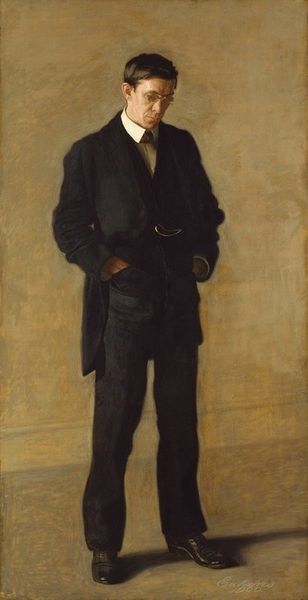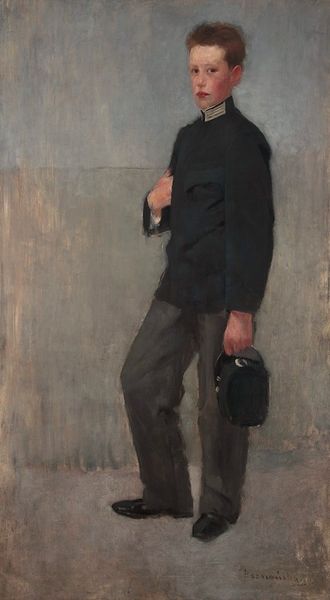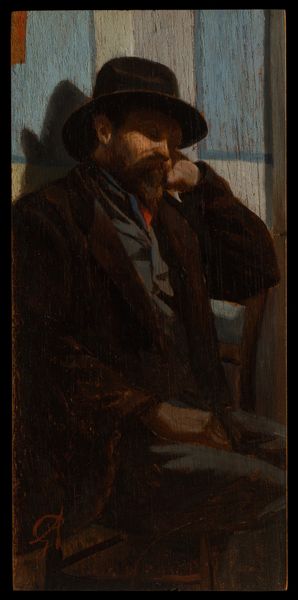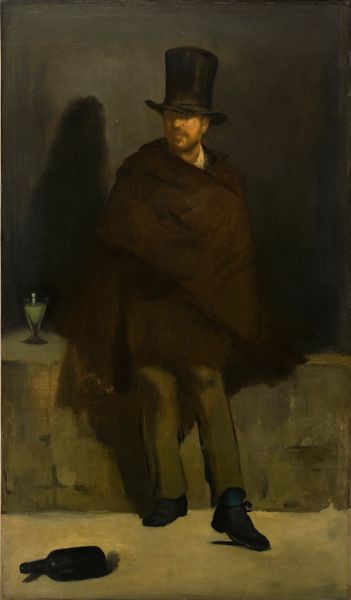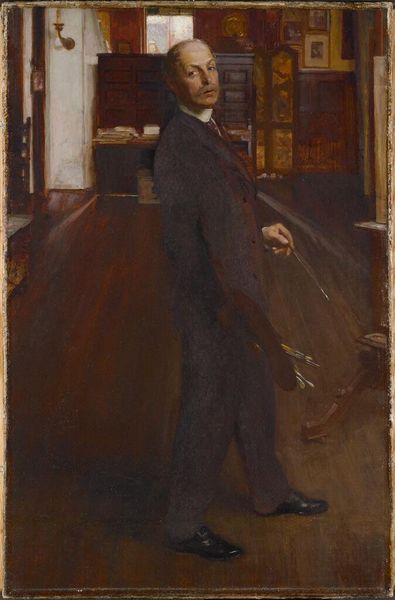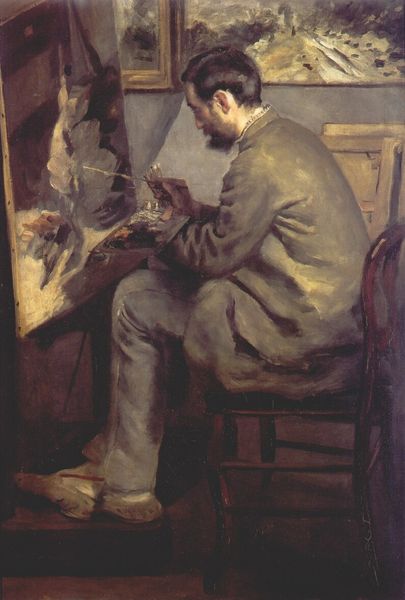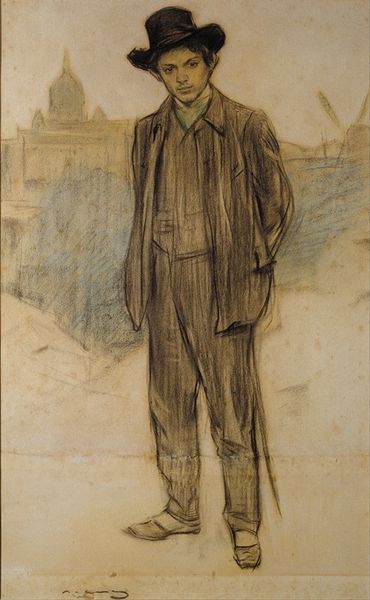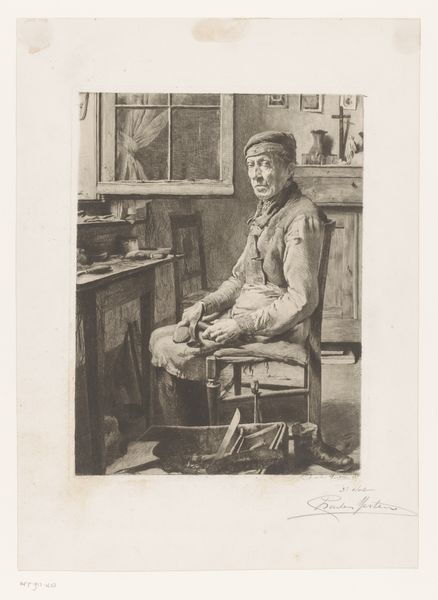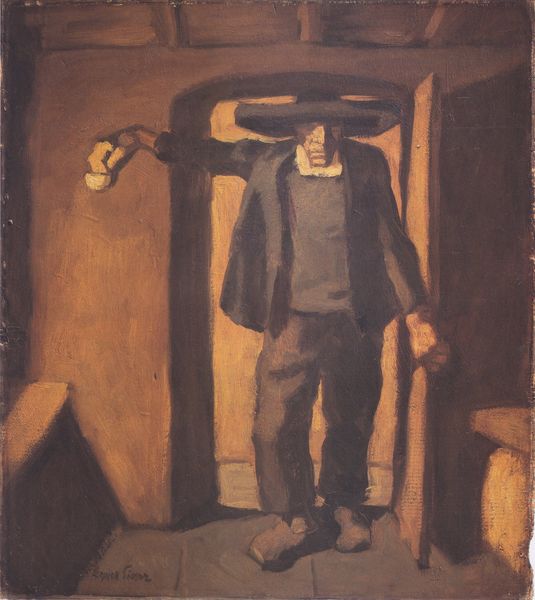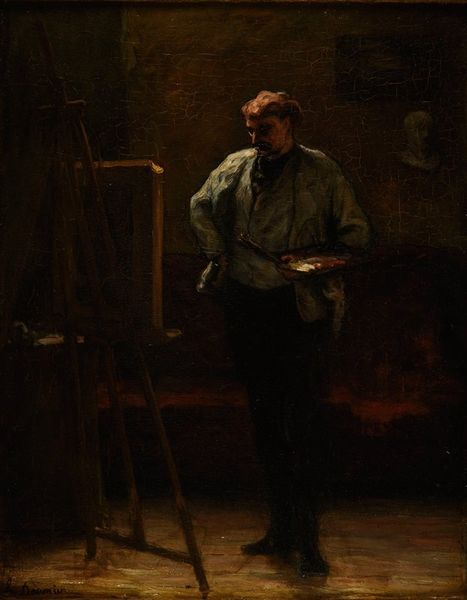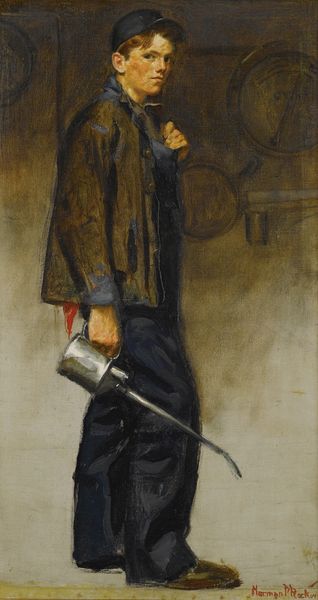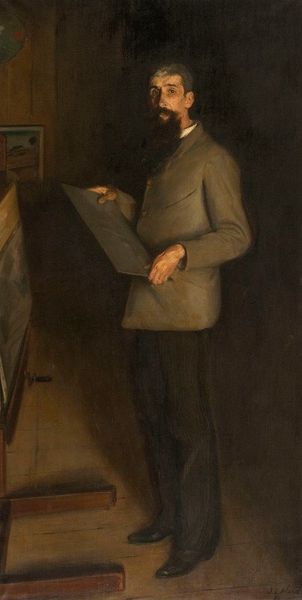
oil-paint, oil, impasto
#
portrait
#
oil-paint
#
oil
#
impasto
#
genre-painting
#
realism
Dimensions: 86.1 x 49.5 cm
Copyright: Public Domain
Curator: Here we have Ottilie W. Roederstein's "Portrait of a Painter in a Parisian Studio," painted in 1887. Editor: My first thought? What a marvelous study in grays! The textures feel almost palpable. Is that impasto I see in the details of his suit and that odd blob hanging near the canvas? Curator: You have a keen eye! Yes, Roederstein employs a delicate impasto technique, particularly noticeable in the lighter areas of the face and around that sphere on the wall which I believe to be his pallet. Consider the artist's relaxed pose in the painting studio. There’s something quietly confident and observational about it, isn’t there? Editor: Confident indeed, yet contained by all those shades. You know, for a “painter in a Parisian studio,” there’s a curious lack of vivid color. Is this realism or Romanticism cloaked in working-class drab? All those wooden supports...I wonder who constructed them, him perhaps? Curator: Fascinating point. Though rooted in realism, it flirts with something more intimate, a silent narrative about artistic identity. And yes, those carefully depicted, raw constructional materials point to an honest portrayal of art as labor and production. This isn’t just inspiration; it’s the nuts and bolts of creativity laid bare! The inclusion of everyday objects disrupts any sense of idealism. Editor: It’s also, potentially, an acknowledgement of the studio’s support network; people who assisted with construction and the procuring of the necessary materials, often overlooked in traditional narratives. So where does that leave the painter then? He's an artist but an artisan, too. He is not divinely inspired; he is part of the factory. Curator: Exactly! The beauty isn't in romanticizing the studio space but in appreciating the tangible elements that define it—labor and community. The sitter is still a Romanticized hero, of course, in terms of the gaze, but by contrasting that heroic stature with labor, Roederstein is presenting the viewer with a nuanced view. It challenges notions of authorship and singular artistic vision. Editor: Looking at it all together then – this impasto, those colors, that very pose – it forms a complex tension, a challenge to traditional depictions. A recognition that creative production is a social act with complex networks of individuals contributing. I’m really rethinking the narrative possibilities in this "drab" palette now! Curator: Precisely. It is a lovely dialogue between artist and environment, maker and means of making.
Comments
stadelmuseum about 2 years ago
⋮
A grande entrée in a small studio: an artist has adopted a confident air and a Bohemian attitude as he sits for his portrait in the sparsely furnished room. The painting of his right hand is incomplete. Hanging on the wall like the coat of arms of a guild is a palette. Two colleagues are meeting here as equals: the unknown man being portrayed and the female artist painting him. At the age of twenty-two, the painter Ottilie Roederstein travelled, like many artists of her time, to Paris, where she succeeded in asserting herself in the male-dominated art scene. She took lessons from portraitists such as Jean-Jacques Henner and exhibited works at the Paris Salon.
Join the conversation
Join millions of artists and users on Artera today and experience the ultimate creative platform.
